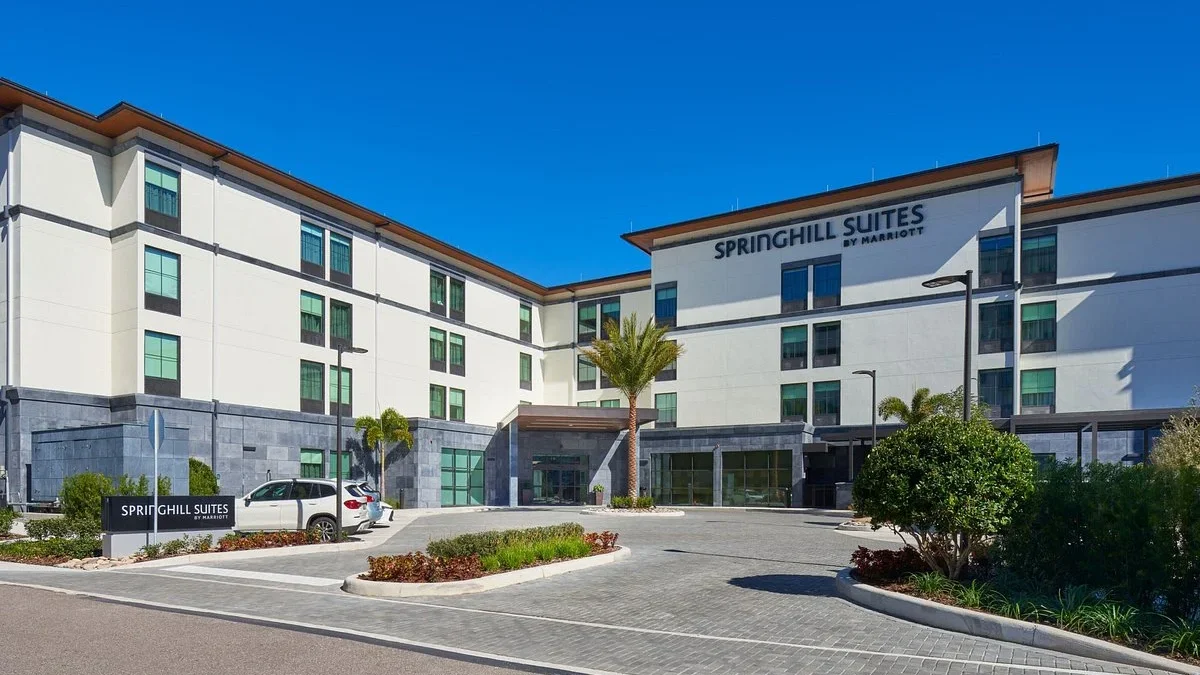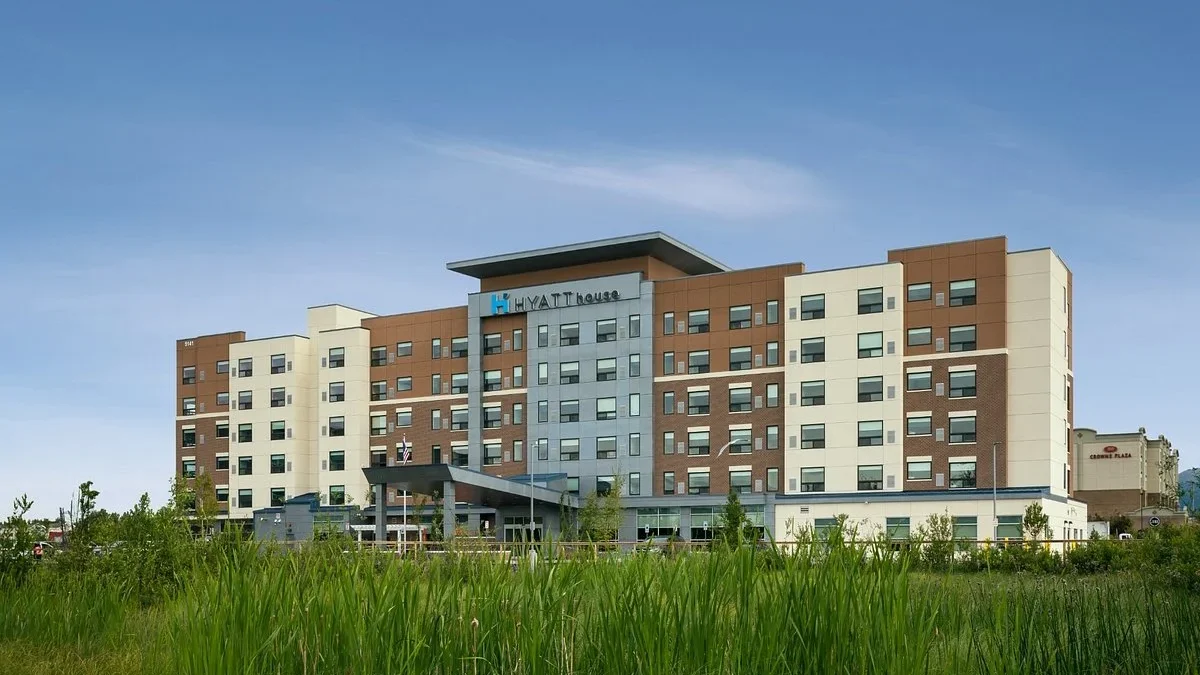
Installing an adapted tub can significantly enhance quality of life for homeowners and family members wishing to assist their loved ones. It facilitates mobility and eases bathing for people with impairments or restricted range of motion. Adapted tub hotels are specially made walk-in bathtubs meant for hotel guest rooms to serve guests with limited mobility. With accessibility features including built-in seats, non-slip floors, a low barrier for simple entry and departure, and grab bars for stability and support, these tubs let guests have a peaceful bathing experience.
A feature of adapted tub hotels is their movable doors, which turn the tub into an accessible space that catches spills and keeps people from slipping or falling. Hotels can accommodate guests with disabilities, limited mobility, or difficulty bending over or stepping into a standard tub by using an adapted tub hotel. Hotels may install ADA accessible restrooms and offer more inclusive accommodations with little to no room remodelling.
Table of Contents
What are Adapted Tub Hotels?
Adapted tub hotel, also referred to as a tub chair, is a particular kind of bathtub that has been designed to accommodate those with disabilities or mobility issues. With features like a door for simple entrance, built-in chairs, grab bars for stability and safety, as well as even hydrotherapy jet systems, these tubs let users have a pleasant bathing experience. They are made to make independent bathing possible for anyone who is unable to utilize a regular bathtub in a safe or comfortable way.
Types of Adapted Tubs
Adapted tubs are available in many styles to accommodate a range of accessibility requirements. These are the most common types of adapted tubs:
Walk-In Tubs:
These tubs feature a door that opens to let you use the tub before closing it and adding water. In addition, the door has a built-in bench. Grab bars, fast-draining systems, and non-slip floors are some of the safety features found in walk-in tubs. They permit taking a bath while seated.
Roll-In Showers:
Roll-in showers don’t have a tub lip to step over and are level with the bathroom floor. They have seats, grab bars, and non-slip flooring in addition to wheelchair access. Shower heads for roll-in showers are frequently movable, and some models come with doors and others with shower curtains.
Barrier-Free Showers:
Showers without barriers do away with obstacles like doors and curbs. They use grab bars, hand-held shower heads, and fold-down seats frequently. They also feature open entries. For people with limited mobility, barrier-free showers provide convenient access.
Low Step-In Tubs:
The side wall of a low step-in tub is shortened, making access easier. They perform the role of a cross between a walk-in and a conventional bathtub. For help entering and exiting, some have grab bars and seats.
Features & Benefits
For people who struggle with movement or have disabilities, adaptable tubs come with a number of useful features.
Walk-in Design
Unlike regular bathtubs, which require the user to go over the side, adaptive tubs have a door that lets the user enter the tub directly. Entry and exit are now significantly safer and easier. When the bather enters, the typically watertight door shuts.
Grab Bars
Grab bars are typically mounted on one or more of the tub’s sides in adaptive bathtubs. As the bather gets in and out of the tub and moves around, grab bars offer support and stability. Grab bars are available in a variety of sizes and shapes to meet the needs of users.
Non-Slip Flooring
The flooring of adapted bathtubs is made to be non-slip. When wet, the materials’ rough surface offers reliable grip. Bathers feel more comfortable moving around without worrying about slipping. Abrasive adhesive strips, perforated stainless steel, and textured plastic are a few typical non-slip materials. For tubs that are adapted, the non-slip flooring is a crucial safety element.
Accessibility
Enhanced accessibility is a noteworthy feature for hotels with adapted tubs. It is simple to enter and exit with a walk-in design’s large entrance. For elderly people, those recovering from surgery or an injury, and persons with disabilities who have limited movement, this makes bathing safer and easier.
Comfort
The goal of adapted bathtubs is to make bathing comfortable. Because of the tubs’ seated-position design, users are able to relax while taking a bath. A spa-like atmosphere is produced by features like chromotherapy lighting, bubble baths, and whirlpool water jets.
Safety
Adapted tub design places a high priority on safety. Grab bars give you stability when entering and exiting. Slips are prevented with non-slip flooring. Accidental flooding is avoided via overflow drains.
Hygiene
A complete and safe bathing experience is made possible by the accessible design. This enhances general health and cleanliness, which are critical as we age. Hair and upper body washing is made easier using handheld shower wands.
Finding an Adapted Tub Hotel
Finding a hotel with an accessible tub that satisfies your accessibility requirements is crucial. Here are some tips to help you choose wisely.
- Try searching for “accessible hotel,” “ADA hotel,” or “handicapped accessible” on travel websites like Expedia, Hotels.com, and TripAdvisor. Look for information about the amenities and accommodations that are accessible.
- Look at major hotel chains’ websites, such as Best Western, Marriott, and Hilton, which offer extensive accessibility sections and contain filters for things that are accessible.
- Check out review websites such as WheelchairTravel.org that focus on wheelchair-accessible hotels and include testimonials from previous visitors.
- For information on the specifics of the hotel’s accessible restrooms and tubs, give them a call. Ask regarding door widths, seat heights, grab bars, etc.
- Think about how close the hotel is to your location and how you can get to and from it by car.
Top adapted tub hotel:
1. SpringHill Suites by Marriott
Top Amenities
- Free High Speed Internet (WiFi)
- Free breakfast
- roll-in showers
- bathtubs with grab bars

2. Hyatt House
Top Amenities
- Free parking
- Free High Speed Internet (WiFi)
- Pool
- Free breakfast

3. Hawthorn Suites by Wyndham
Top Amenities
- Free parking
- Free High Speed Internet (WiFi)
- Pool
- Free breakfast
- roll-in showers

A Guide to Choosing the Perfect Adapted Tub
When choosing an accessible tub for your house, the most important factors to take into consideration are the dimensions of your bathroom and your level of accessibility requirements. Check them below;
- To make sure there is enough room for the tub of your choice, measure your bathroom carefully in advance. Because the tub must fit through the doorways during installation, pay close attention to where they are located. If you need to accommodate a wheelchair or walker around the tub, don’t forget to factor in the additional room needed.
- Next, think about your unique demands for accessibility and mobility. You could prefer a tub with a door opening and built-in seat if you plan to transfer yourself. A tub with a powered seat that lifts and lowers can be perfect for those who are less mobile.
- Additionally, determine whether you require any specialised features, such as humidity controls, chromotherapy lighting, or whirlpool water jets. Although these features will raise prices, they can have therapeutic benefits.
- Lastly, fit the size and shape of the adapted tub with the design of your bathroom. Corner bathtubs work nicely in small spaces. Doors on walk-in tubs that open inward or outward can match a variety of bathroom styles. Take careful measurements and select a tub that will fit comfortably in your current bathroom and enhance accessibility.
Installation
It takes careful planning and a significant expenditure to install an adapted tub in a hotel room. The procedure will change based on the plumbing, accessibility requirements, and current bathroom layout. Among the crucial factors are;
To make sure there is enough room for the tub, a qualified contractor must measure and assess the current bathroom layout. After that, they can suggest the best tub model and design a thorough installation plan. Necessary plumbing, structural support, maneuvering space, and ADA compliance are important considerations.
The contractor will have to take off the current tub and fixtures in order to convert it. Demolition, wall framing, floor reinforcement for weight loads, and plumbing and drain relocation may all be necessary for this.
Because adapted tubs are heavy—often weighing over 100 pounds—proper manoeuvring into place requires expertise. To prevent leaks or water damage, the contractor will attach the drain and carefully seal the area surrounding the tub with waterproof building materials.
After installation, an in-depth leak and safety examination of the bathroom and tub is required. Before providing final approval, the contractor must inspect water seals, drainage, grab bars, accessibility, and make sure all fixtures and features are operating correctly.
Maintenance & Cleaning
Here are some tips of maintenance & cleaning:
- At least once a week, use soap and water or a mild, nonabrasive cleaner to clean the tub. Steer clear of strong chemicals.
- After cleaning, thoroughly rinse away any soap residue. Surface damage may eventually result from accumulated residues.
- After every use, wipe clean every surface to avoid soap scum and mildew accumulation. Particular focus should be given to difficult-to-reach places like drains and faucets.
- Avoid using abrasive scouring pads on acrylic and fiberglass surfaces; instead, use a soft cloth or sponge.
- Regularly check and tighten any loose tub fittings. Reapply caulk to the base and edges as necessary.
- Any accessible moving parts, such as grab bars, spouts, and drains, should be cleaned and lubricated as needed.
- Use a 50/50 solution of white vinegar and water for mineral deposits. Soak for a while and then rinse well.
- Steer clear of any oil-based waxes or cleansers that can leave slick residues.
- Clean thoroughly and look for any mildew accumulation on the door seals and jets.
- To get rid of mildew or tough stains, deep clean the tub two to four times a year.
Conclusion
For people who find it difficult to get into or out of a standard bathtub or to stand for extended periods of time, adapted tub hotels offer an optimal bathing alternative. They keep the user safely seated while enabling them to slide over and submerge themselves partially in the tub’s water. For many elderly and those with disabilities or mobility challenges, this makes taking a bath safer, easier, and more enjoyable.


